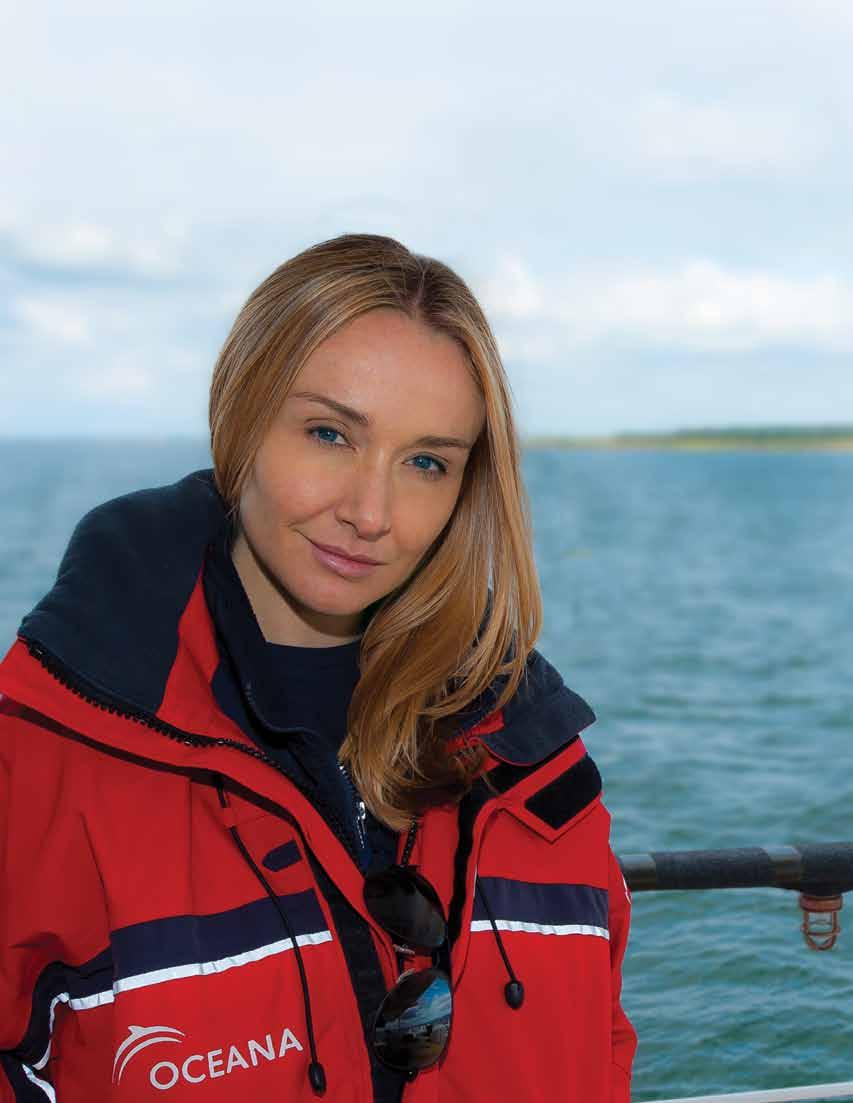
SUMMER 2012 | oceana.org Protec ting the World’s Oc eans PLUS Victories for sea turtles and sea lions Marine protected areas in the philippines saVing easter island’s tuna Oceana welcomes Alexandra Cousteau as a senior advisor a liVing legacy
Protecting the World’s Oc eans
Oceana is the largest international advocacy group working solely to protect the world’s oceans. Oceana wins policy victories for the oceans using science-based campaigns. Since 2001, we have protected over 1.2 million square miles of ocean and innumerable sea turtles, sharks, dolphins and other sea creatures. More than 500,000 members and e-activists support Oceana. Global in scope, Oceana has offices in North, South and Central America and Europe. To learn more, please visit www.oceana.org
Board of directors
Dr. Kristian Parker, Chair
James Sandler, Vice Chair
Simon Sidamon-Eristoff, Secretary
Valarie Van Cleave, Treasurer
Keith Addis, President
Herbert M. Bedolfe III ricardo Cisneros
Ted Danson
Sydney Davis César Gaviria
María Eugenia Girón
Stephen P. McAllister
Michael Northrop
Dr. Daniel Pauly
Susan rockefeller Heather Stevens roger van Vliet
Sam Waterston
oceana
Chief Executive Officer
Andrew Sharpless
Executive Vice President & General Counsel
James Simon
Senior Vice President, North American Oceans & Chief Scientist
Michael Hirshfield, Ph.D.
Vice President, European Oceans and Seas
Xavier Pastor
Vice President, South American Oceans & Antarctica
Alex Muñoz
Vice President, Belize Audrey Matura-Shepherd
Vice President, Strategic Marketing & Communications
Matthew Littlejohn Vice President, Global Development
Bettina Alonso
Senior Director, Pacific Susan Murray
ocean council
Susan rockefeller, Chair
Julie Tauber McMahon, Vice Chair
Dr. Andrew Bevacqua
Carolyn Marks Blackwood
Keely and Pierce Brosnan
Deborah Buck Barbara and Bertram Cohn
Ann Colley
Dan and Beth Cort
Andrew and Sydney Davis
Michael Dershowitz
Brenda Earl
Barbara Ettinger and Sven Huseby
Christina Falco and Michael Frumkin
Joanna and Brian Fisher
Kelsey Grammer
Lea Haratani
Julie Hill
Carey Hotchkis
Hardy Jones
J. Stephen and Angela Kilcullen
Slane Holland Lightburne
Cynthia Lufkin
Willa and Ted Lutz
Dede McMahon
Vanessa Noel Aaron Peirsol
Nicole Polizois
Lois robbins
Anne Alexander rowley
Eve Kornyei ruffatto
Andrew Sabin
Starr Scott
Jennifer Small and Adam Wolfensohn
Kelly T. Smith
Danielle Steakley
Sutton Stracke
Danielle Thomas Susan Trees
editorial staff Editorial Manager
Emily Fisher Graphic Design
Heather ryan
SUMMEr 2012 CONTENTS
6 troubled tuna
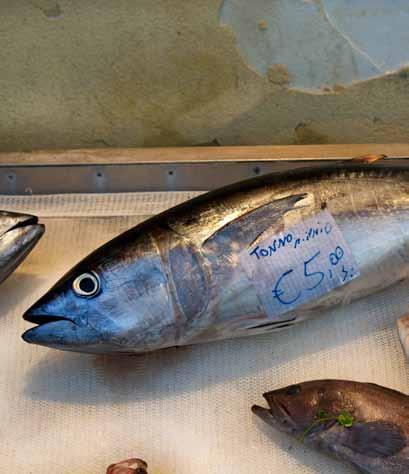
Oceana is published by Oceana Inc. For questions or comments about Oceana, or to subscribe to Oceana, please call Oceana’s membership department at +1.202.833.3900, e-mail membership@oceana.org or write Oceana, Member Services, 1350 Connecticut Ave. NW, 5th Floor, Washington, D.C. 20036, USA.
Oceana’s Privacy Policy Your right to privacy is important to Oceana, and we are committed to maintaining your trust. Personal information (such as name, address, phone number, e-mail) includes data that you may have provided to us when making a donation or taking action as a Wavemaker on behalf of the oceans. This personal information is stored in a secure location. For our full privacy policy, please visit Oceana.org/privacypolicy.
Please recycle.
Printed with Eco-Ink — low volatility vegetable oil-based ink on 25% post-consumer recycled, processed chlorine free paper produced using 100% wind power in a carbon neutral process.
An Oceana investigation uncovers an attempt to illegally fish for tuna in the depleted waters of Easter Island.
6
Oceana uncovers an illegal fishing plot in Chile.
A journey to the Philippines to see marine protected areas in action.

8 the small sanctuary approach
How a network of small marine protected areas in the Philippines is helping to combat overfishing. 12 the people’s referendum
Oceana is leading the fight to protect Belize’s waters from offshore drilling. 13 are the oceans Jellifying?
Scientist and Oceana board member Dr. Daniel Pauly answers the question: Are the oceans jellifying?
On the Cover
ceo’s note There are some surprising reasons to save the oceans.
Making Waves The latest campaign victories from Oceana’s international team.
news & notes Oceana unveils a new seafood fraud report and more.

Q & a Alexandra Cousteau discusses her new role at Oceana.

events Christie’s Green Auction, Oceana’s SeaBlue party and more.
Oceana board member rogier van Vliet on his commitment to the oceans.
Peruvian chef Gaston Acurio offers a recipe for his famous cebiche.
parting shot A mother and child in a Philippine fish market.
©
f eatures d epart M ents
OCEANA.O r G
1
2
4
5
14
17 donor profile
18 chef’s corner
19
Alexandra Cousteau aboard the Hanse Explorer for Oceana’s Baltic Sea Expedition.
OCEANA | Carlos Suarez
138
Are the oceans jellifying? Dr. Daniel Pauly discusses.
Give Today
Oceana’s accomplishments wouldn’t be possible without the support of its members. You can help Oceana campaign to restore our oceans with your financial contribution.
Call us today at 1.877.7.OCEANA, visit www.oceana.org/give or use the envelope provided in this magazine to make a donation. Please contact us if you are interested in planned giving that could support Oceana’s work and also provide you with income and potential tax benefits. Oceana is a 501(c)(3) organization and contributions are tax deductible.
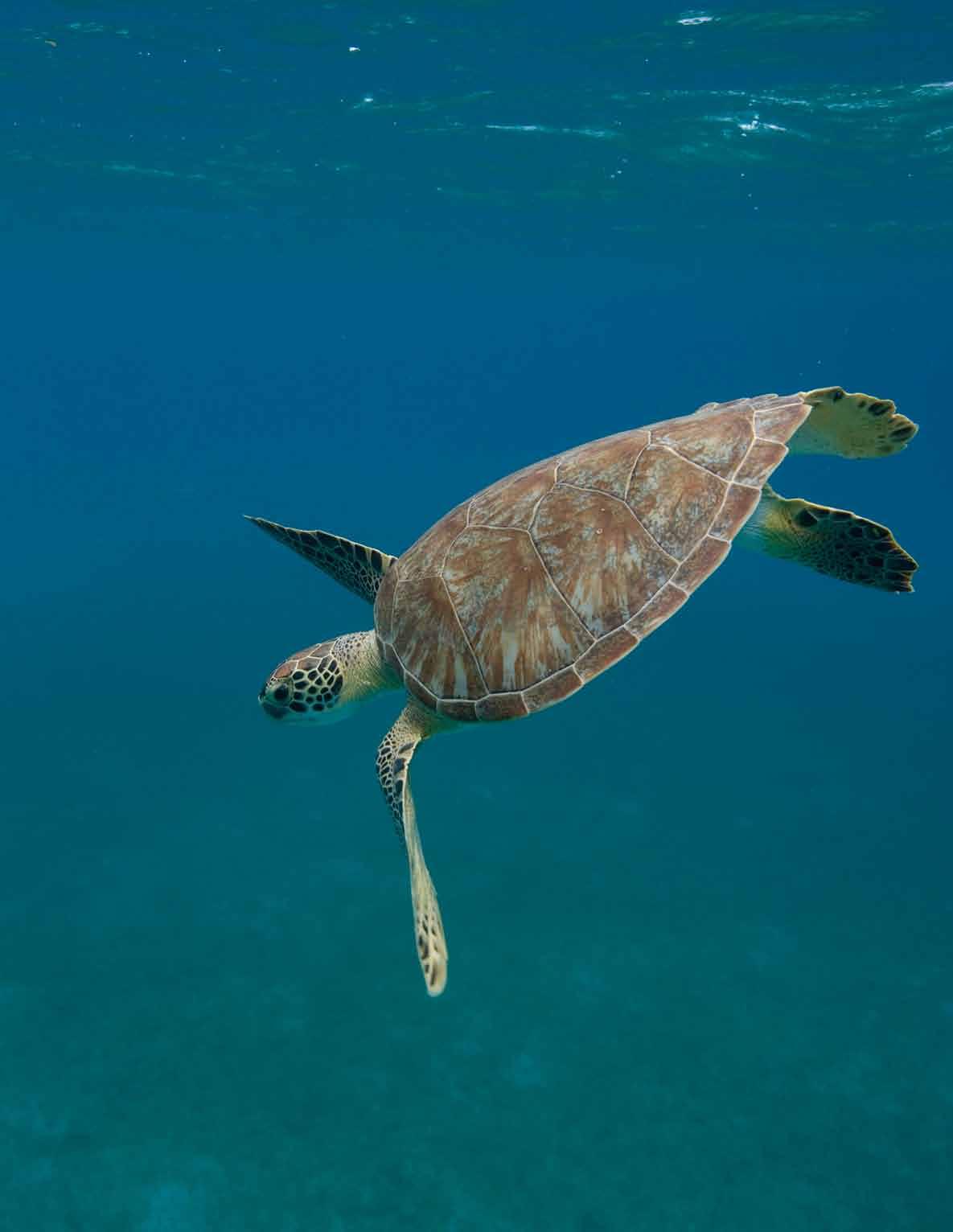 Protecting the World’s Oc eans
Protecting the World’s Oc eans
are you someone who eats food?
Then you have a lot of reasons to care about the oceans. I bet you’ll be surprised by some of them.
If you like seafood, you know you are often eating the last wild animals that regularly appear on your dinner plate. Even if you’re eating farmed salmon, you’re implicitly dining from the ocean’s wild menu, because wild ocean fish are ground up and fed to farmed salmon like dog chow.
So clearly you are someone who has a very good reason to help Oceana restore the oceans to abundance.
But suppose you don’t like seafood? Suppose you’d always rather have red meat, despite your doctor’s plea that shifting to some fish will benefit your heart, your brain and your waistline? In that case, you don’t have a dogfish in this fight, right?
Wrong.
The oceans are helping to meet humanity’s huge appetite for animal protein. Even in their currently depleted state, oceans play an essential role in feeding people all over the world. Worldwide, wild seafood is as important as are eggs. If the countries of the world are allowed to mismanage their ocean fisheries into continued collapse, then the wild fish in people’s diets will be replaced by meat.
That means that the price of your meat will go up in response to the added demand.
OK, suppose you’re a vegetarian, then you don’t have to worry, right?
Wrong.
Higher meat prices mean expanded herds of hundreds of thousands more cattle, pigs, chickens, lambs and other terrestrial livestock. Terrestrial livestock eats grain. In fact, the average steer eats 13 pounds of grain for every pound of meat it provides. So that means that the livestock necessary to substitute for collapsed ocean fish are a huge new customer for grain, and that will drive up your grain prices. So whether you like doughnuts or dim sum, you should support sensible ocean management.
If you just like water, you have a reason to help stop ocean collapse. Grain production is an enormous demander of irrigation, and hence a big drain on freshwater aquifers. Do you like unflooded coastal cities and familiar weather cycles? Then an abundant ocean is for you because livestock produces vast amounts of methane, a potent greenhouse gas.
The core price of food worldwide has spiked upward for the last decade, according to data from IFS International Financial Statistics.
Sensible ocean management – scientific quotas, protection of nursery habitat, and reduced bycatch – can make the oceans more productive, permanently. Fishery managers in the coastal countries of the world need to resist the short-term
demands of the big commercial fleets and get these policies in place now. You and I and the 9 billion people who will be living here in 2050 need them to get this done before it’s too late.
Andy Sharpless CEO
Oceana is grateful for the grants, contributions, and support it has received from dozens of foundations and companies and thousands of individuals. Oceana wishes to thank all of its supporters, especially its founding funders as well as foundations and individuals that in 2011 awarded Oceana grants totaling at least $500,000: Adessium Foundation, Arcadia Fund, Gordon and Betty Moore Foundation, Oak Foundation, Oceans 5, Planet Heritage Foundation, Robertson Foundation, Rockefeller Brothers Fund and the Sandler Foundation of the Jewish Community Endowment Fund.

OCEANA.O r G | 1 titleceo’s note
Need a reason to care for the oceans? Here are a few.
New marine reserves approved in Oregon
After campaigning by Oceana and its allies, Oregon has passed a law creating the state’s first network of marine reserves and marine protected areas (MPAs).
These three new marine reserves and adjacent MPAs add 109 square miles to the state’s existing nine square miles of protected
waters, and they include diverse rocky reefs, kelp forests, and important habitat for sea birds and harbor seals. The marine reserves prohibit all extractive uses and development, while the marine protected areas allow limited fishing but not bottom trawling or fishing for forage fish such as sardine and anchovy.
A safe haven for Pacific leatherbacks
The National Marine Fisheries Service designated nearly 42,000 square miles off the U.S. West Coast as a safe haven for Pacific leatherback sea turtles. The new protected area is the first permanent safe haven for leatherbacks designated in continental U.S. waters and is the largest area set aside to protect sea turtle habitat in the nation.
Leatherbacks are the largest sea turtles in the world, weighing up to 2,000 pounds.
Scientists have recently found that leatherbacks travel an astonishing 6,000 miles from Indonesia to this area of the Pacific to feed on jellyfish. Leatherbacks are fast disappearing—numbers have dropped by as much as 95 percent since the 1980s.
Oceana has been campaigning to get these areas protected as “critical habitat” for the endangered leatherback since 2007. The new protections will require
Scientific studies have shown that marine reserves and MPAs can increase the abundance, size and diversity of marine life, and the benefits extend to adjacent unprotected waters as the populations swell and swim past the boundaries of the reserves.
that any federally permitted activities, including offshore drilling, be reviewed by the federal government to ensure that they don’t negatively impact leatherbacks. Oceana will continue to campaign to get additional protections that minimize the negative impact of commercial fishing, water pollution and marine vessel traffic on leatherbacks when they are migrating through these important feeding grounds.
New devices save sea turtles
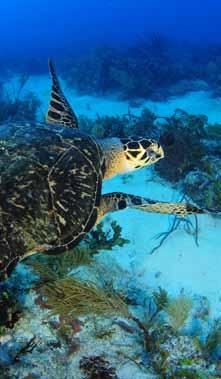
Sea turtles living in the waters of the U.S. Mid-Atlantic can now swim a little safer, thanks to new equipment on scallop dredges that will reduce the number of turtles killed by the scallop industry.
In April, the National Marine Fisheries Service approved new regulations that require the scallop fishery to modify its dredges, which are steel triangular frames that pull mesh bags of four-inch steel rings. These dredges have crushed and drowned untold numbers of sea turtles. Under the new rules, scallop fishermen must use Turtle Deflector Dredges during important migration and feeding
times for the turtles. The devices include wedge-shaped gear modifications that push turtles up and out of the way as the dredge passes. Scientists estimate that sea turtle mortality will be reduced by at least 56 percent with the new gear. The scallop industry in the eastern U.S. stretches from Maine to North Carolina and catches about 60 million pounds of scallops a year. The dredgers share the waters with sea turtles, primarily loggerheads. All six species of sea turtles found in U.S. waters are listed as threatened or endangered with extinction under the Endangered Species Act.
2 | SUMME r 2012 title
Making WaVes
Saving food for Steller sea lions
Oceana scored a victory for Steller sea lions when a federal court ruled to uphold protections for the Western population of the endangered marine mammal.
The protections were put in place by the National Marine Fisheries Service (NMFS) to reduce competition between large-scale commercial fisheries, and endangered Steller sea lions in the Aleutian Islands. The fisheries were taking so much of the sea lions’ food that NMFS ruled they were potentially causing jeopardy to the future viability of these giant pinnipeds.
In 2010, Oceana campaigned for and won new rules against bottom trawling in certain areas where sea lions feed. The State of Alaska and fishing industry groups sued to have the sea lion protections thrown out. The new ruling means that Steller sea lions will have a better chance of surviving in their Aleutian habitats.

Alibaba.com stops selling manta ray products
Oceana collected nearly 40,000 signatures from online supporters asking international commerce website Alibaba.com to pull manta and devil ray leather products from their website. The company quickly responded, pulling the
products and promising to prohibit sales of animals protected under UN policies in the future, which includes manta and devil rays.
Manta ray populations are overexploited
for their skin and other body parts. Manta ray skin is turned into leather, and Oceana found several such products for sale on Alibaba’s site, including manta ray cowboy boots and wallets.
spanish national park saved from oil development
The Spanish government nixed a proposed oil industry development that would have threatened Doñana National Park, a UNESCO World Heritage Site, after campaigning by Oceana and our allies.
The park is an area of marsh, shallow
streams, and sand dunes, and is home to one of the few large stretches of undeveloped coastline remaining in Spain. More than half a million birds winter in the park each year, and the area is home to many rare species, including the Iberian lynx and the Spanish imperial eagle.
Oil companies attempted to install an oil refinery discharging mooring station and pipeline in the waters of the Gulf of Cadiz near Doñana. This station would have resulted in many more tankers visiting the area and an increased risk of spills and accidents during unloading operations.
OCEANA.O r G | 3 titleMaking WaVes
Oceana was a promotional partner of the film “Big Miracle”, starring Drew Barrymore, John Krasinski (“The Office”) and Oceana board member Ted Danson, about the true story of three gray whales trapped in the ice off northern Alaska.
After campaigning by Oceana, the french supermarket chain intermarché, the 4th largest chain in France (with over 1,800 stores) agreed to provide information to their customers on mercury contamination risks from eating certain types of seafood.

The World Bank announced a new international alliance, the global partnerships for the oceans, and Oceana is a member. News of the alliance was first announced at the World Oceans Summit in Singapore, which brought together many of the world’s leaders in ocean conservation including Oceana CEO Andy Sharpless.
royal dutch shell filed a lawsuit against a group of environmental groups, including Oceana, in an attempt to prevent the group from challenging the company’s oil spill response plan in the Arctic.
In April, Oceana CEO Andy Sharpless delivered a presentation at the tedxsf conference about how saving the oceans can be a solution to world hunger. The well-received presentation is now available online, including at oceana.org/ feedtheworld.

Oceana released a new report documenting widespread seafood mislabeling in the los angeles area DNA testing confirmed that 55 percent of the seafood our campaigners sampled was mislabeled.

title neWs & notes
1 2 3 4 5 6 4 | SUMME r 2012
alexandra c ousteau
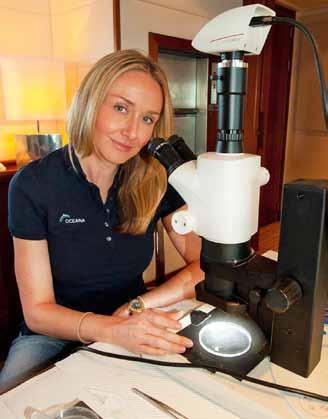
The granddaughter of famed ocean explorer and filmmaker Jacques-Yves Cousteau, Alexandra Cousteau doesn’t take her family legacy lightly. She spends her days advocating for ocean and water conservation around the world. Oceana welcomed her as a senior advisor to the organization in February, a role she will juggle along with many others, including being a mother to her baby daughter Clémentine. Besides lending her expertise to Oceana, Alexandra is a National Geographic Explorer, founder of Blue Legacy International, and brand ambassador for Oceana expedition partner Revo Sunglasses. She spoke with Oceana editor Emily Fisher.
tell me about your family’s history with the oceans.
Clearly my family has a long history with the oceans. It’s hard to tell my story without talking about my grandfather because it’s a multi-generational continuation of what he started. He spent years imagining the aqualung, finally co-inventing the regulator with Emile Gagnan in 1942. And it hasn’t evolved that much (since then) – the technology is incredibly simple. It allowed him to pull back the curtain on 70 percent of the planet that up until that point nobody could have imagined. My grandfather was really the first to tell stories about what’s there and help people understand it.
What’s your earliest ocean memory?
My first dive was when I was seven. My grandfather took me in the Med off the coast of Nice. He had fashioned a small scuba set for me, a little mask and a little tank with rubber suspenders and what seemed like a huge regulator on my small face. I was hesitant at first because I didn’t understand the technology; breathing underwater was just counter-intuitive. Before I had a chance to protest, he looked down at me, gave me a wink and pushed me in. I took a few tentative breaths and as soon as I saw that it worked I started swimming down, I was so excited. I found myself surrounded
by these small silver fish which were swimming in unison in a circle around me.
our generation is in so many ways the last generation to be able to restore some of these places or protect them from disappearing.
how have you seen the oceans change since you were growing up?
I spent a lot of time in the south of France as a child and most of those places are dead zones now. You don’t see the same fish that I grew up with, or the size of the fish has changed. I also spent some time in Maui as a child. I would spend eight hours a day in the tide pools. They were perfect tide pools for a child; they were like individual little aquariums. I went a few years ago and it was just covered in slime. These places are slowly disappearing.
Our generation is in so many ways the last generation to be able to restore some of these places or protect them from disappearing. And that is where I see a shift
from what my father and grandfather were doing to what we need to do. I fear that for my daughter’s generation, the ones being born now, it will be too late to restore some of these places. We are running out of time.
What do you think is the most important aspect of ocean conservation today?
Community activation – we need to get people involved and we need to give them a sense that what they do matters, that they can make a positive difference and impact on these issues and their life will be better because of it.
We fail to realize that our oceans start in our backyards. They start in the rivers and creeks and streams and lakes that are in our communities, so we are all connected to the oceans, and the oceans are the key life support system of the planet. So helping people understand that, I think, is the most important thing. My family showed us what’s there but it’s up to all of us to protect it before it’s gone.
OCEANA.O r G | 5 Q & a
© OCEANA | Carlos Suárez
trou B led tuna
By e M ily fisher
With an area of only 64 square miles, it lies in the Pacific Ocean more than 2,000 miles west of mainland Chile, and is famous for its iconic, gigantic stone statues, known by the local Rapa Nui community as moai.
The island is also recognized by some as a cautionary tale in environmental collapse. Some scholars, including author Jared Diamond, believe the island’s forests and soil became so depleted that the island’s ancient society collapsed in a struggle over diminishing natural resources.
Today Oceana and our allies in the area are
working to prevent history from repeating itself, this time in the waters surrounding the island. Oceana has been working to expand the Motu Motiro Hiva marine reserve around Salas y Gómez Island, next to Easter Island. In addition, the campaign has been working to create a smaller marine reserve in Hanga Roa Bay off Easter Island, and has proposed the closure of all of its waters to industrial fishing. These new measures would protect the area’s fisheries and marine resources, which have been depleted in recent decades.
In the process, this year Oceana has pulled back the curtain on a secret plan to aggressively fish this already depleted area under the guise of research.
According to records Oceana obtained last year, Chile’s Universidad del Mar asked for a permit to conduct “research fishing”
in Easter Island’s waters via four Japanese longline ships. Each ship would use fishing lines more than 60 miles long with nearly 3,000 hooks each to target the area’s prime catch: yellowfin tuna.
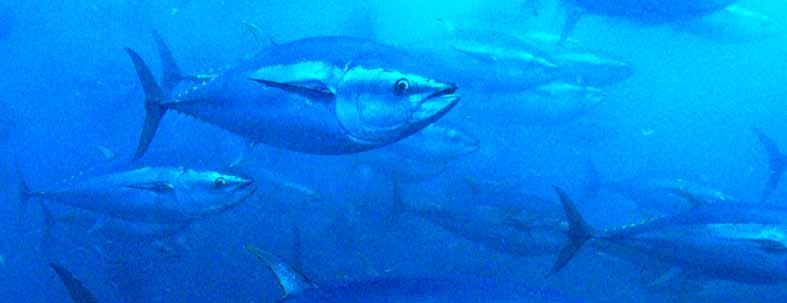
Yellowfin tuna has been a source of income for the Rapa Nui people, but it has suffered substantial declines in recent years and is listed by the Monterey Bay Aquarium as a species to avoid when caught by international longlines. The scarcity of tuna has become so dire, in fact, that Easter Island now imports most of its tuna from Tahiti.
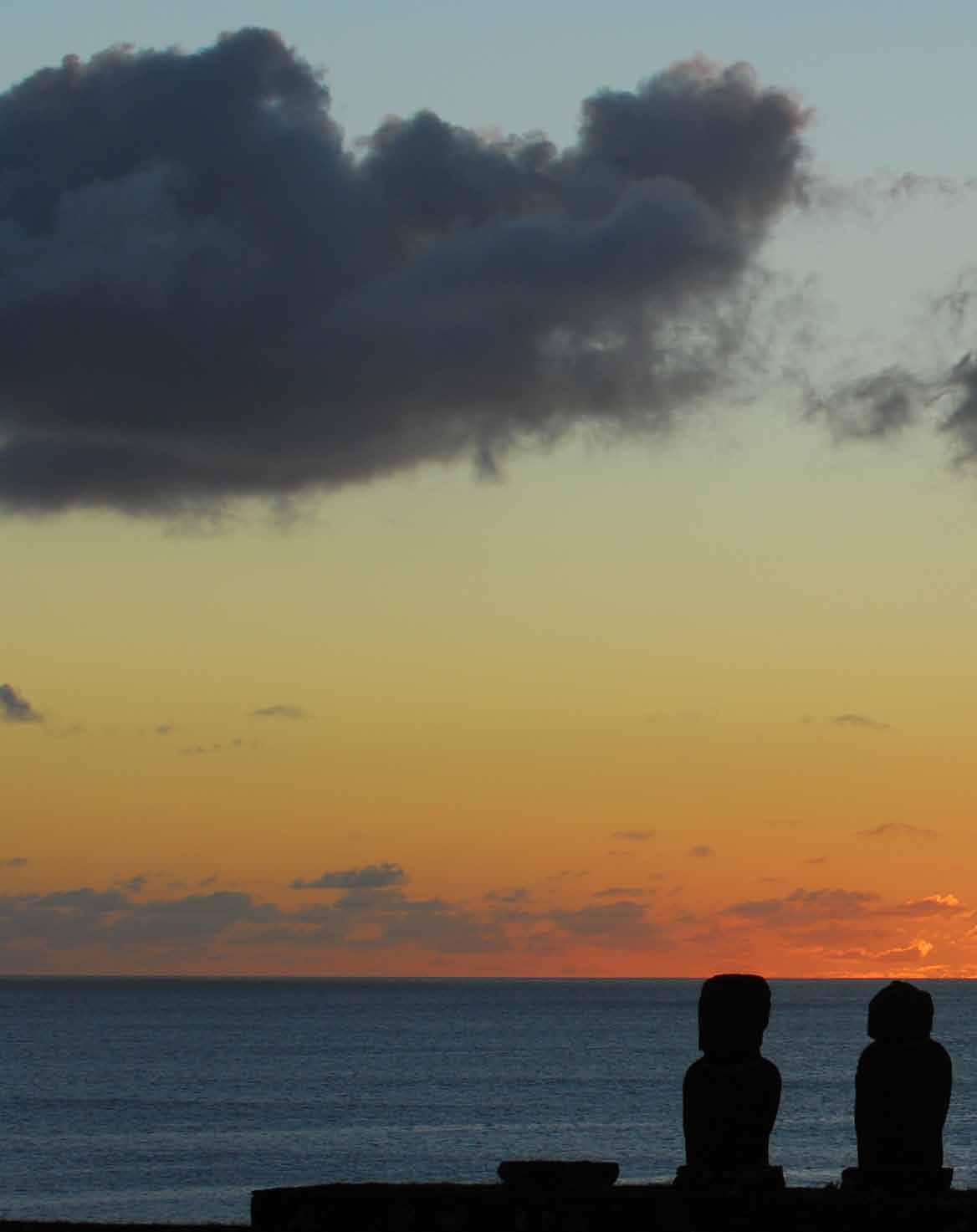
As Oceana investigated the matter of the research fishing in Easter Island, things got murkier. In the past, the Chilean government had turned over documents to Oceana in response to requests for information, but this time they refused.
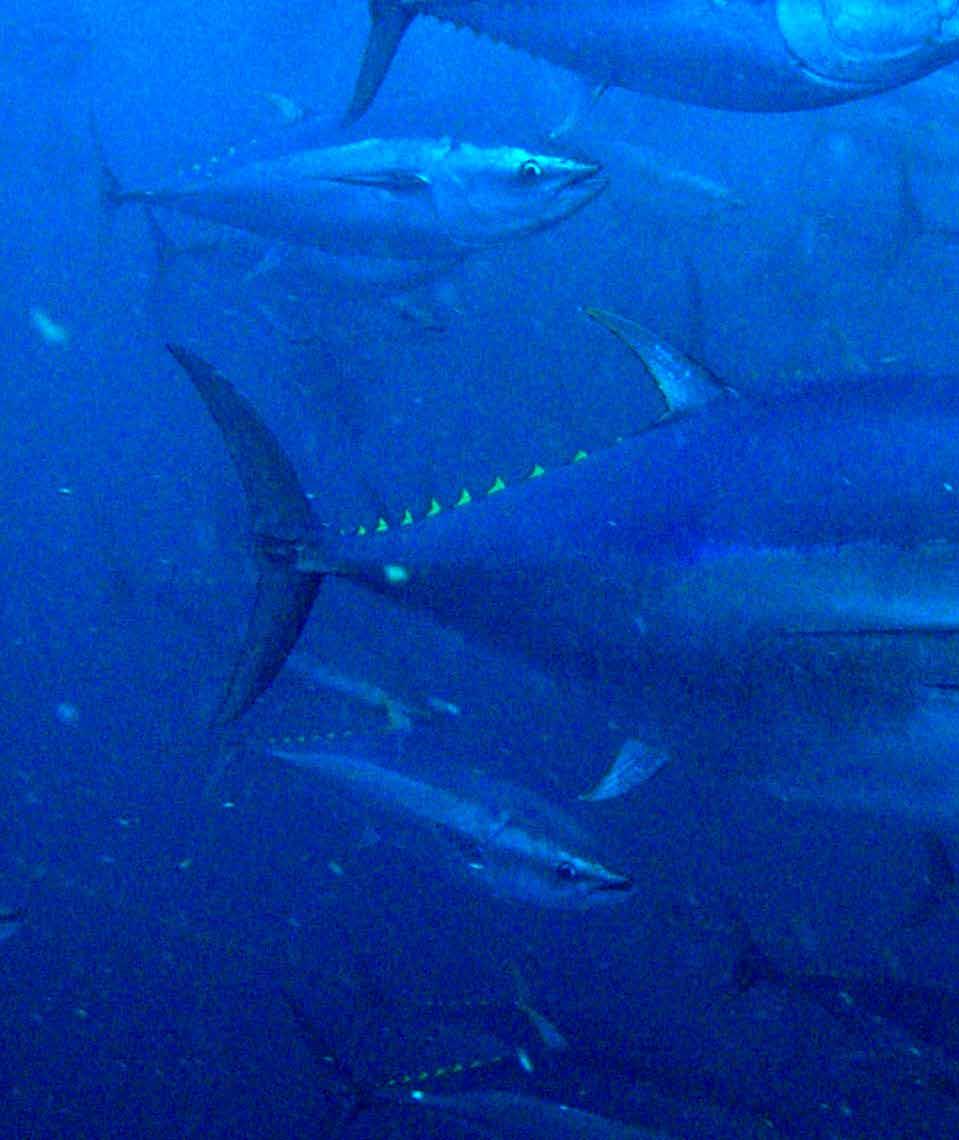
6 | SUMME r 2012
The scarcity of tuna has become so dire that Easter Island now imports most of its tuna from Tahiti.
easter island is one of the world’s most isolated places.
Finally, after more pressure from Oceana, the government released information to Oceana, but one very important document was missing: the contract between the Japanese company and the Universidad del Mar. This omission led Oceana to believe that the University potentially was profiting from research fishing, which is a not-forprofit activity in the country.
Oceana filed a formal complaint for the denial of public information before the Chilean Council for Transparency. The Council ruled in favor of Oceana and forced the government to disclose the contract. In addition, Oceana discovered that the Japanese had offered to pay the University $120,000 for the original research permit.
“It’s an open secret that research fishing in Chile has been used as a way of increasing

fishing quotas artificially, as much in industrial fishing as in artisanal fishing,” said Alex Muñoz, Oceana’s Vice President for South America. “In a big portion of the cases there is no real research done in relation to the permits. If these permits had been granted, the impacts would have been devastating for Easter Island.”
In addition, the research permits do not apply otherwise mandatory conservation measures. For example, the normal restrictions on mackerel are not required of mackerel research fishermen.
Recently, Chilean government officials visited Easter Island to meet with local fishermen and express their support to expand the existing no-take zone around Salas y Gomez Island and for the proposal to create a marine reserve area in Hanga Roa Bay in Easter Island.
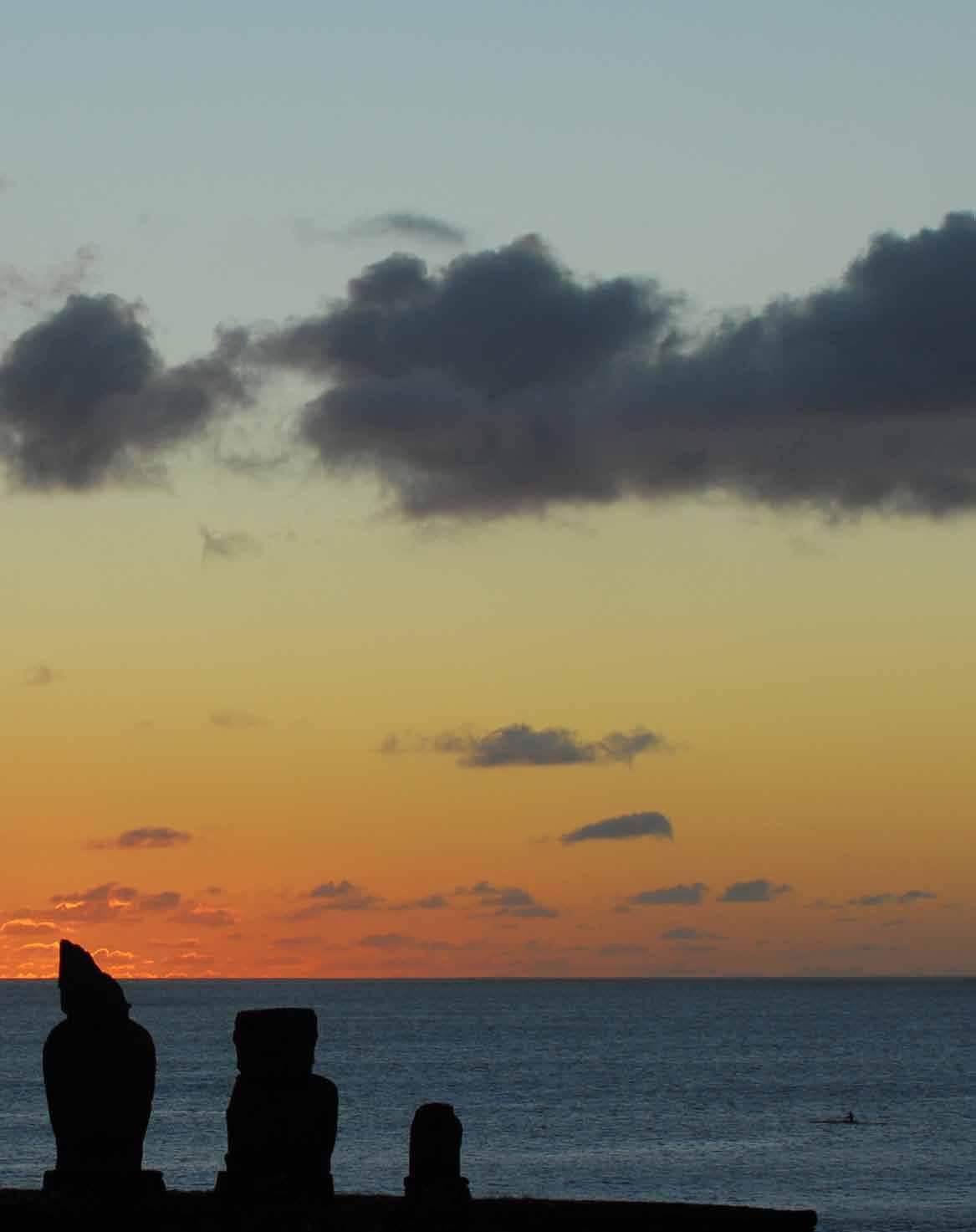
Officials also reassured local fishermen that they would not grant research permits for proposed “research fishing” of tuna. Oceana and the Rapa Nui community were relieved to have won the battle, but remain vigilant. The Universidad del Mar dropped all of its requests for research fishing permits after being exposed by Oceana.
“This decision shows two lessons: our country can do better in administering its fishery resources, and that civil society can play a critical role in scrutinizing and improving that task,” said Muñoz.

OCEANA.O r G | 7
how an oceana investigation uncovered an attempt to illegally fish for tuna in easter island’s already depleted waters
the small sanctuary
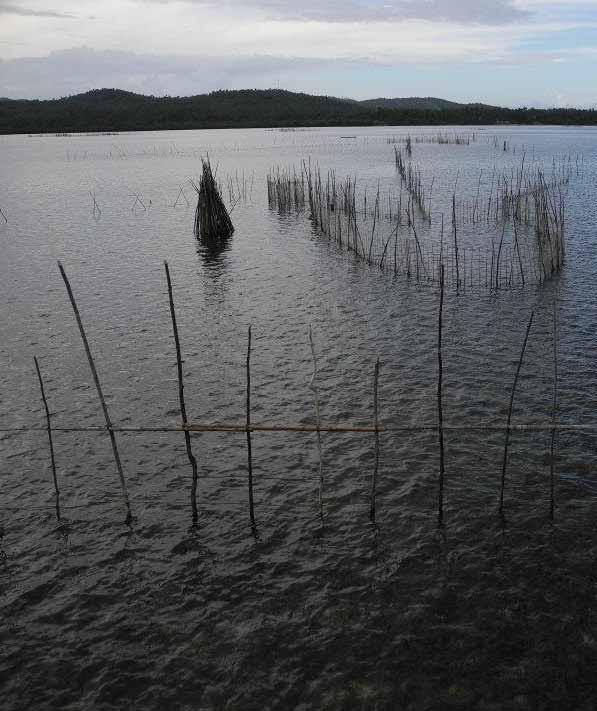
8 | SUMME r 2012
approach
by suzannah evans
AAyoke Island is a scrap of island blanketed with a riot of coconut and palm trees in the south of the Philippines. Its shores are guarded by a stunning reef of ten-foot-wide table corals and seemingly endless clusters of maze-like branch corals.
There’s just one problem with this island paradise: There are almost no fish in the coral reef.
The small village of thatch and bamboo homes on Ayoke is comprised almost entirely of subsistence fishing families. But they’re struggling to survive due to a legacy of overfishing and destructive fishing that has caused their catches of anchovy, flying fish, rabbitfish, giant clams and more to drop precipitously.

Ayoke Island and its fishermen could stand in for many of the Philippines’ coastal fishing communities. The country contains more than 7,000 tropical islands and has 1.4 million square miles of incredibly productive seas. The Philippine archipelago makes up the northern tip of the Coral Triangle,
which contains a third of the world’s coral reefs. And in this nation of islands, it’s no surprise that the Philippines’ culture and history is deeply tied to the sea.
The country is the world’s 15th-largest catcher of fish and the 9th largest consumer, eating two million metric tons of fish a year. Seafood comprises more than half of the animal protein eaten by Filipinos, and fishing provides direct income to 1.3 million small fishers and their families like those on Ayoke Island. These fishers make up much of the Philippines’ poorer communities. Four out of five fishing families in the Philippines live below the poverty threshold.
The Philippines has more marine protected areas by number than any other country: 1,600, mostly established in the last two decades as fish stocks dropped so swiftly that it became impossible to ignore. For decades, the Philippines operated its national waters as de facto open-access fisheries, meaning anyone could take
whatever fish they wanted. In 1998, in the face of years of fishing declines, the government passed a fisheries reform law that allowed the local jurisdictions to establish the small no-take zones that have become the country’s signature.
This move empowered the local municipalities, but also meant that the enforcement of the no-take zones was up to the villages. And it means that only a fifth of the Philippines’ 1,600 marine protected areas are meeting their goals.
In Ayoke’s case, the no-take fish sanctuary has seen some success. Before the sanctuary was established six years ago, fishers caught just a couple of pounds of fish a day – not enough to feed their families, which can have half a dozen children in this devoutly Catholic country. Now, Ayoke fishers report catching 10 or more pounds of fish a day.
And they may have even better catches on the horizon, as a U.S.-based group called Rare has begun training programs for local Filipinos to launch campaigns
OCEANA.O r G | 9
to improve enforcement of the no-take zones, which are overseen entirely by volunteers.
But even with better enforcement of the no-take zones, fishers like the ones on Ayoke Island will continue to struggle for one big reason: They alone are not responsible for the declining amounts of fish to be caught in Philippine waters.

The artisanal fishers in dugout canoes must compete against the moneyed, technologically-advanced industrial fishing fleet. Most devastating of all, the industrial fleet is catching the same fish that the local fishers are trying to catch to feed their families. Of the top 10 species caught by the artisanal fishers and the commercial industry in the Philippines, eight are the same. In the 1950s, local fishers caught 70 percent of the Philippines’ total fish catch. Today, it’s just 46 percent – even though commercial fishing employs a fraction of the number of local fishers.
And the numbers don’t tell the whole story. In the Philippines, artisanal fishers are defined as boats that are under three tons. These are the only boats allowed into municipal waters, which are the shallow, reef-filled bays much like Ayoke.
The dugout and outrigger canoes used
by the locals in Ayoke fall well within this category, but some commercial operators have found a way to skirt the rules. They’ve developed a large fleet of “mini-trawlers” that are under the three ton limit, but don’t behave in any other way like true local fishers. They’re owned by businessmen who’ve figured out how to exploit the system by hiding in the statistics as municipal fishers.
This allows them to trawl within coastal waters, snatching fish from artisanal fishers who have little recourse. These mini-trawlers are uncounted in the country’s government statistics, and they mean that the true artisanal fishers are even more threatened than the numbers would indicate.
Officially, the number of industrial fishing vessels in the Philippines tripled between 1980 and 2002. According to the FAO, the country’s total fish catch leveled off more than 20 years ago at about 1.65 million tonnes. But those catch statistics may still be total fantasy. During Ferdinand Marcos’ two decades as president, the government reported steady jumps in catch every year, despite fewer and fewer fish actually in the water.

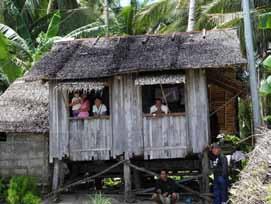
The increasing scarcity of the Philippines’ fish means that seafood

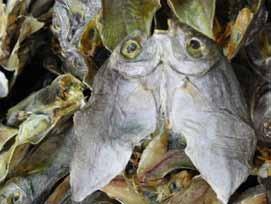
10 | SUMME r 2012
officially, the number of industrial fishing vessels in the philippines tripled between 1980 and 2002.
is now increasingly priced out of the working man’s grasp. In Cebu, the oldest city in the Philippines and an island-hopping plane ride from Ayoke, the customers at the downtown fish market are primarily tourists from the capital city of Manila because the fish are too expensive for locals to buy. A pound of rabbitfish costs $5 in Cebu. That’s a whole day’s gross earnings for a fisher in Ayoke.
As their backyard fish become more scarce, many of the coastal families, with few other economic opportunities, will have to turn to welfare or other forms of aid or risk going hungry. Fifteen percent of the Philippines’ population is already undernourished. It’s among the top 10 low-income, food-deficit countries. These countries produce a third of the world’s fish, but have three-quarters of the world’s undernourished children.
The Philippines will have to address its out-of-control commercial fishing industry in order to protect its citizens in places like Ayoke and hundreds of other coastal fishing communities. But given their limited resources, the people of these villages – with support from Rare – are improving their chances. No-take zones, even small ones, work well in the Philippines. Like the fishers observed in their own neighborhood sanctuaries, scientists have also confirmed that no-take zones in the Philippines have greater overall biomass, higher biodiversity, and bigger fish than outside the zones.
Good coastal fisheries stewardship, combined with national policies on quotas, habitat and bycatch, can alleviate poverty. A report from the Nature Conservancy and partners in 2008 showed that small no-take zones in the Philippines, Indonesia, Fiji, and
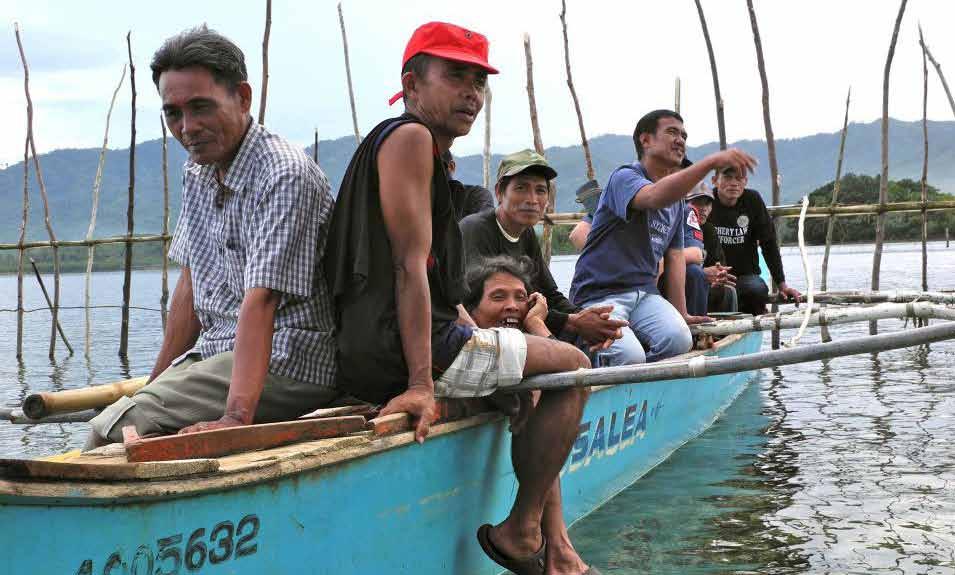
the Solomon Islands reduced poverty in five ways: increasing fish catch, creating tourism-related jobs, improving coastal governance, boosting health especially in children, and benefiting women by providing them with economic opportunity through gleaning (shellfish gathering), seaweed farming, and tourism opportunities.
And coupled with a strong national program, places like the coral reef in Ayoke can once again be home to vibrant schools of fish that provide livelihoods and sustenance for the families who call the island home.
OCEANA.O r G | 11
the increasing scarcity of the philippines’ fish means that seafood is now increasingly priced out of the working man’s grasp.
All images: © OCEANA | Suzannah Evans
THE P EOPLE ’ S R EFERENDUM
BY E MILY F ISHER
H OW O CEANA IS LEADING THE FIGHT TO P r EVENT OFFSHO r E D r ILLING F r OM Wr ECKING B ELIZE’S WATE r S.
TThe din against offshore drilling in Belize continues to grow, and Oceana is leading the chorus.
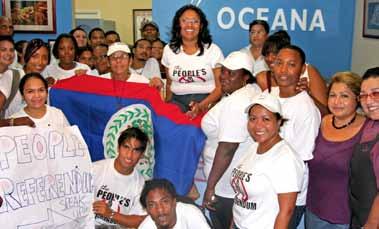

According to a poll conducted by Oceana and pollster Yasmin Andrews, an overwhelm ing majority of Belizean citizens are outspo kenly against allowing drills in the country’s waters, but the national government, which was narrowly re-elected this spring, remains determined to drill for offshore oil.
Last year, Oceana and the Belize Coalition to Save Our Natural Heritage requested that the government hold a national referendum on whether or not to drill in Belize’s waters. They collected 20,160 signatures on a petition from Belizeans across the country, exceeding 10 percent of the voting popula tion, the threshold required to trigger the government to consider a referendum.
It was a powerful example of democracy in action and should have resulted in a public vote, the first of its kind under the amended referendum Act of 2008.
However, instead of allowing the referen dum to proceed, the government rejected 8,047 signatures and the petition was declared invalid. The reason? The
government claimed the signatures on the petition didn’t match those on the voter cards closely enough. The people were effectively silenced because of poor penmanship.
But the government underestimated the determination of the Belizean people. In response to the government’s referendum denial, Oceana and the Belize Coalition to Save Our Natural Heritage quickly orga nized a “People’s referendum” the week before the elections at more than 50 polling stations across Belize, where all voting was overseen by a Justice of the Peace. Almost 30,000 Belizeans turned out to cast their votes, and 96 percent of them voted against offshore drilling. The message could not have been clearer.
With a population of just 350,000, Belize has a small economy that is heavily dependent on tourism. The World Travel & Tourism Council calculates that in 2011 tourism contributed to 40,000 jobs in Belize, which is 30 percent of the country’s total employment.
The government’s drilling plans include sites in the middle of the Mesoamerican reef, which is the world’s second largest barrier
reef system, a UNESCO World Heritage Site and a destination point for over 60 percent of the tourists that support Belize’s economy.
Members of the tourism industry and many other Belizeans have to wonder: What would an oil spill mean for one of the world’s natu ral wonders and for the future of Belize as a tourist destination? If superimposed over the marine areas of Belize, the 2010 Gulf of Mexico oil spill is seven times larger. “A spill even one-tenth of that size would have cata strophic effects for the entire country,” said Oceana Vice President for Belize Audrey Matura-Shepherd.
In the aftermath of the election, Oceana is reaching out to local communities in Belize to discuss the next steps in the fight to pro tect Belize’s reef from offshore oil drilling.

Matura-Shepherd told Fox News, “This referendum is not the end. It’s the beginning. We’re using the law to force the government to respect the concerns of the people.”
Photos left to right: A sample ballot from the referendum; Oceana Vice President for Belize, Audrey Matura-Shepherd (center) and supporters; Volunteers on referendum day.
12 | SUMME r 2012
Local television and newspaper reports have been filled with stories about jellyfish outbreaks in recent years. People notice jellyfish more these days – or is it the jellyfish that notice more people? In any case, more people are get ting stung – a rash of rashes as it were.
There are also more reports of the water intake pipes of power or desalinization plants being clogged up by jellyfishes. However, it would be wrong to infer just from such reports that jellyfish are increas ing worldwide. It could be that there are more people going to beaches and more power and desalinization plants being built, and that incidents involving jellyfishes are nowadays more likely to be reported that they were earlier.
I decided to get to the bottom of this question a few years ago. I gave one of my graduate students, Mr. Lucas Brotz, the task of elucidating for his master’s thesis whether there has truly been a worldwide increase in jellyfish or not. One way to go about this was to rely on data from so-called ‘systematic surveys’ of marine ecosystems conducted by research vessels. However, the scientists conducting these surveys are usually inter ested only in the commercial caught species, and they often threw away the jellyfish that they had collected without recording them.
Nevertheless, by searching through a huge amount of scientific literature, one can find many studies indicating, for various ecosystems, that jellyfish have increased, decreased or remained steady over time. Similarly, the opinions of fishers and marine scientists can help identify changes (or lack thereof) in jellyfish populations, as such professionals are keenly tuned to the marine environment.
The results have now been published and they are quite clear: of the 66 so-called large marine ecosystems (LMEs) of the world ocean, 45 had data allowing infer ences on trends in jellyfish. Of these, 28 (62%) showed an increasing trend, while only 3 (7%) showed a decreasing trend
Ask Dr. Pauly:

are the oceans Jellifying?
(the rest 14 LMEs showed no trend)¹. These results received a lot of media attention because it was the first study that demonstrated widespread increases on the basis of an analysis of numerous datasets spanning many decades, contrary to earlier studies and the above-mentioned above media reports, both of which tend to pertain to brief, localized incidents.
We are now engaged in the identification of the causes for the widespread increase of jellyfish. One possible culprit is the recent decimation of jellyfish predators, for example, leatherback turtles and sunfish (Mola mola), caught as bycatch of tuna longline fisheries. Similarly, overfishing of jellyfish competitors (e.g., small pelagic fishes) may also play a role.
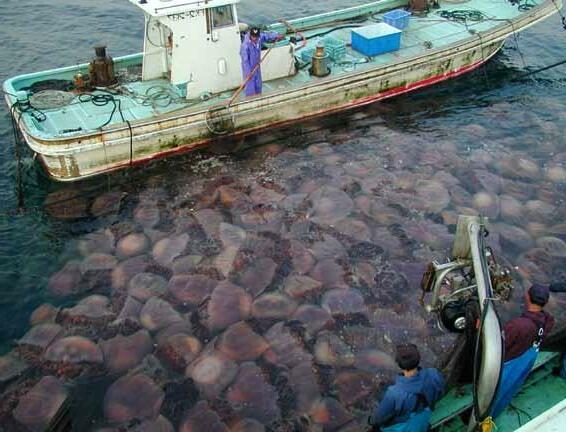
Yet another possible cause is the modi fication of habitats by bottom trawling, which eliminates the potential predators (e.g., crabs) and competitors of ‘polyps’, the flower-like young stage of many kinds of jellyfish. Finally, another cause for the increase of jellyfish, likely acting in concert with the others, is the construction boom
¹ Brotz, L, W.W.L. Cheung, K. Kleisner, E. Pakhomov and D. Pauly. 2012. Increasing jellyfish populations: trends in Large Marine Ecosystems Hydrobiologia DOI: 10.1007/s/10750-012-1039-7.
along the coasts of the world, for ports, ma rinas, jetties, etc. These structures provide new habitat for polyps, which subsequently reproduce, potentially leading to millions of free-floating jellyfish.
By
There are other ideas floating around, notably linking the increase in jellyfish with global warming or the increase of ‘dead zones’ in the world’s oceans. Whatever the reason(s), jellyfish are proliferating, and since they feast on the eggs and larvae of fish, this is a further challenge to the health of the oceans in general, and to fisheries in particular.
Perhaps bathers everywhere will have to follow the example of the Australians who, because of the nasty box jellyfish, usually ven ture into the ocean only with a full body suit. Such form-hugging, colorful body suits can be fashionable, which is the only plus side of the ocean jellification story that I can see.
OCEANA.O r G | 13
Daniel Pauly
¹
Daniel Pauly is a Professor of Fisheries at the Fisheries Centre of the University of British Columbia, the Principal Investigator of the Sea Around Us Project, and a member of the Board of Oceana.
Nomura jellyfish, pictured above, have proliferated in Japanese waters in recent years. Photo: Niu Fisheries Cooperative
A Celebration with the Board of Directors in Orange County
On April 17, Oceana’s board of directors hosted a cocktail reception for more than 160 guests at Dr. William and Donya Dobkin’s private Newport Coast Estate, known as “Villa Tesori.” Oceana

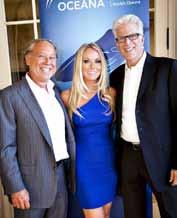

CEO Andy Sharpless spoke of Oceana’s recent accomplishments, and Oceana board members Valarie Van Cleave and Beto Bedolfe thanked Orange County for its support, specifically Oceana’s

SeaChange Summer Party, which has become an annual must-attend event in Orange County. To learn more, please visit seachangesummerparty.org.
SeaBlue Makes a Splash in Southern Florida
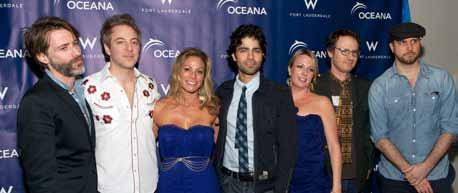
On March 3, over 300 guests gathered at the oceanfront W Fort Lauderdale for SeaBlue, Oceana’s first major event in southern Florida. Oceana supporters in the area and special guests such as Oceana senior advisor Alexandra Cousteau and world champion freediver Martin Stepanek sipped cocktails while enjoying a live performance by The Honey Brothers, featuring Oceana Ambassador Adrian Grenier. Thanks to encouragement from co-chairs Senta Monet Mackel and Louise Storelli Fogerty, guests also signed a petition designed by Sherman’s Lagoon cartoonist Jim Toomey to Florida Governor Rick Scott calling for a state ban on the trade of shark fins. SeaBlue was made possible with thanks to generous sponsors and underwriters including: W Fort Lauderdale, Discovery Channel’s Shark Week, LiveESP.com, Wells Fargo, Bacardi U.S.A. and Emagination.
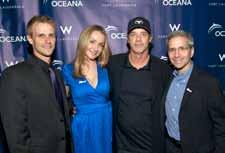
14 | SUMME r 2012 title eVents
Left to right: Oceana CEO Andy Sharpless with Michael and Tricia Berns and Karen Cahill; event hosts Bill and Donya Dobkin and board member Ted Dan son; Eve Kornyei Ruffatto and board member Valarie Van Cleave. All photos: Carla Rhea
Clockwise: Martin Stepanek, Oceana Senior Advisor Alexandra Cousteau, Wyland and Oceana Execu tive Vice President Jim Simon; SeaBlue atmosphere; Oceana Ambassador Adrian Grenier and the Honey Brothers with Co-Chairs Senta Monet Mackel and Louise Storelli Fogerty. All photos: Steven Shires
Christie’s Green Auction: A Bid to Save the Earth
On April 11, over 600 guests gathered once again at Christie’s in New York City for the third annual Green Auction: A Bid to Save the Earth, which benefitted Oceana, Central Park Conservancy, Conservation International and the Natural Resources Defense Council. This year’s event raised over $1.3 million for the four groups, bringing the three-year total to over $5 million.
The event, which featured a musical performance by Grace Potter of Grace
Potter and the Nocturnals, was co-chaired by Oceana board member Susan Rockefeller and her husband David Rockefeller, Jr., Anna and Graydon Carter, Salma Hayek and François-Henri Pinault and James Hedges IV. Special guests included Glenn Close, Amanda Hearst, Lauren Bush, and Coco Rocha, among others.

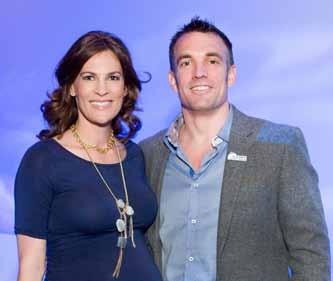




In what was undeniably the most dramatic moment of the evening, a week-long charter of the stunning Hemisphere – the largest
sailing catamaran in the world – was auctioned for Oceana’s benefit. The final bid price came to $150,000, the highest bid recorded in the history of the Green Auction. Oceana is deeply appreciative of Burgess, the superyacht specialists, for their assistance in bringing this opportunity to the auction block.
OCEANA.O r G | 15 title eVents
Clockwise: Bid to Save the Earth Co-Chairs and Oceana board member Susan Rockefeller and David Rockefeller, Jr.; Glenn Close; Ocean Council members Angela and Steve Kilcullen; Kristin Sarra, Craig Cohen, Grace Potter, Peter Brown and Summer Osterman; board member Maria Eugenia Giron, EVP Jim Simon and Ocean Council Vice-Chair Julie McMahon; Amanda Hearst.
© Patrick McMullan
© Patrick McMullan
© John Dee
© John Dee
© John Dee
© Patrick McMullan
earth

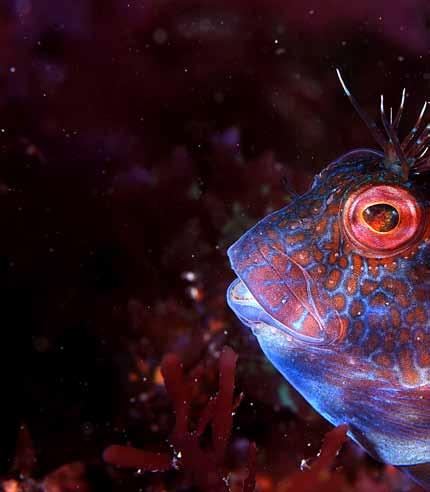
16 | SUMME r 2012
day oceana is a member of earthshare, a federation that represents the nation’s most respected environmental and conservation charities in hundreds of workplace giving campaigns across the country. Make every day
contribution
to
to
them
find out more about how you and your
can
info@oceana.org or
1% for the planet is a growing global movement of over 1,400 member companies – small and large – in 38 countries that donate at least 1% of sales to environmental organizations. as a 1% non-profit partner, oceana may accept donations from members of the 1% network – a network growing every day. over 2,100 non-profits worldwide are included in the 1% program, and over $50 million has been funneled toward nonprofit partners to date. Oceana invites you to join its annual call-in membership meeting. October 25, 2012 2:30pm-3pm EST topic: Oceana Campaigns toll free: 866-939-8416 outside of the u.s.: 678-302-3534 Meeting number: 5616345# Protecting the World’s Oceans
EarthShare’s payroll
program allows donors
direct their contributions to Oceana; to any combination of EarthShare’s members; or
all of
through one general gift to EarthShare! To
workplace
support Oceana through an EarthShare campaign, please email
visit EarthShare’s website at earthshare.org.
rogier van Vliet
Rogier van Vliet joined Oceana’s board of directors in December 2011. Van Vliet is the chairman of the Adessium Foundation, a privately funded public benefit organization that provides financial support to charitable organizations in the Netherlands and around the world. He is also a director at Multifund, a private investment company. He spoke with us about his interest in ocean conservation.
how did you become interested in ocean conservation?
At the Adessium Foundation, we consider the preservation of natural biodiversity and the responsible use of natural resources to be of utmost importance. Ocean conservation is a relatively new area of interest to our foundation, but it has proven to be an interesting topic. While learning more and more about the oceans and its challenges, the urgency to act has been growing on me rapidly.
is there a coastal place you feel most connected with?
The Balearic Islands are so beautiful and are important to me. I feel very connected to that region. It is an area I have visited frequently during the last 25 years and I hope to pay many more visits to that part of the Mediterranean.
What made you decide to join oceana’s board of directors?
I felt very honored to be asked by Oceana to become a board member last year. I
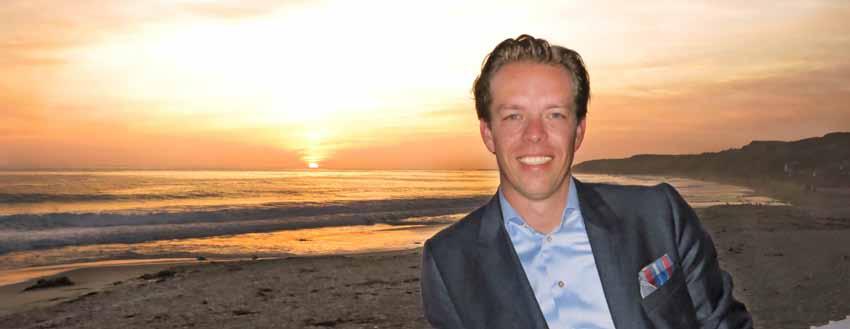
consider joining an organization’s board to be a considerable commitment and therefore gave it serious thought before taking on such an international position. It has turned out to be a great learning experience for me.
What I like about Oceana is its professional and action-driven approach and its diverse and committed international team – one that feels like family. I am impressed with Oceana’s track record that has been built in the first 10 years.
What ocean conservation issue is the most compelling to you and why?
There are many issues that are important to mention. One is offshore oil drilling in general, but especially the intended drilling in the Arctic. When things go wrong ‘normally’ we have a hard time managing failures in the oceans, let alone in the freezing Arctic. It just does not make sense.
Second is the issue of overfishing, which is little by little jeopardizing human security. We depend on ocean life so
much but somehow have not been able to collectively manage and defend it. That is becoming a worrying problem to me.
anything else you want oceana readers to know about you or your work?
I am an optimist and I do believe that with good management we will be able to turn the tide and make the oceans serve us in a way that is good for all of us including the special creatures that live within it. Abundant and bright oceans – that’s my hope for the future.
OCEANA.O r G | 17 titledonor profile
What I like about Oceana is the professional and action-driven approach and its diverse and committed international team — one that feels like family.
© OCEANA
gastón acurio
With 28 restaurants in 12 countries, prolific Peruvian chef Gastón Acurio may be Latin America’s answer to Bobby Flay or Mario Batali.

Acurio and his wife operate restaurants around the world, including the popular upscale global chain, La Mar Cebichería, which opened its doors in New York City last year. The restaurant serves over 60 types of ceviche, or “cebiche,” a Peruvian specialty made from fresh raw fish marinated in citrus juice.
Acurio is dedicated to seafood sustainability, and in 2011, La Mar Cebichería announced a partnership with the Monterey Bay Aquarium’s Seafood
cebiche elegance
Watch program, pledging to source only sustainable seafood.
“Why do we cook?” Acurio asks. “To give pleasure to the people that could pay for our dishes? That’s it? Is that the only purpose of being a chef? Or do we have a larger responsibility? Can our skill, training, knowledge, influence, and recognition contribute to the sustainability of our food in the future? Or do we close our eyes, our kitchens, and our hearts to all of the challenges that are moving, right now, into our area of influence. As always, it’s just a matter of choice. We are not going to be better or worse people if we choose one or other way, but it’s time to choose.”
Leche de tigre
1 cup fresh lime juice from about 10-15 limes (the softest, juiciest available)
2 cloves of garlic, smashed ½ pc habanero pepper
4 ice cubes
¼ lb. striped bass scrap
1 cup cilantro leaves
½ cup red onion, roughly chopped Salt to taste
Combine all ingredients in a blender and puree until smooth. Strain mixture through a fine-mesh sieve and season to taste with salt. Set aside.
Cebiche
1.5 lbs sushi-grade striped bass, cut into ½-inch cubes (all the scrap can be used for leche de tigre) ¼ cup fresh lime juice (about 4 limes)
4 oz. red onion, sliced very thin
1 pc habanero, cut in half
½ tbsp. cilantro leaves
1 cup choclo (cooked Peruvian corn kernels)
2 lbs sweet potato, roasted at 375 until soft, peeled and cut into chunks
1 cup leche de tigre (see above)
Salt to taste
rub the bottom of a large bowl with the cut sides of the habanero; slice the habanero and reserve for garnishing later. Add the cubed fish, ice cubes, a healthy pinch of salt and lime juice to the bowl and mix together. Add half of the sliced red onion, leche de tigre and sliced habanero. Mix well and check for seasoning – you may want to add more salt.
Serve the ceviche with the cut sweet potato and choclo in a large bowl or several small plates. Drizzle any extra leche de tigre over the fish and garnish with cilantro leaves.

18 | SUMME r 2012 title chef’s corner
© Noah Fecks
The Philippines is the world’s 11th-largest catcher of fish and the 9th largest consumer, eating 2 million metric tons of fish a year. Seafood comprises more than half of the animal protein eaten by Filipinos, and fishing provides direct income to 1.3 million small fishers and their families, like the woman and child pictured here in Cebu’s central fish market.
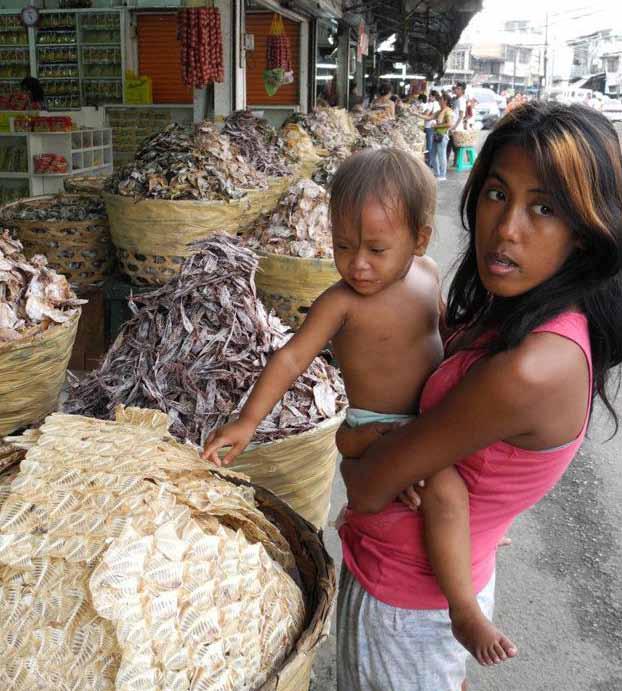
OCEANA.O r G | 19 titleparting shot
© OCEANA | Suzannah Evans
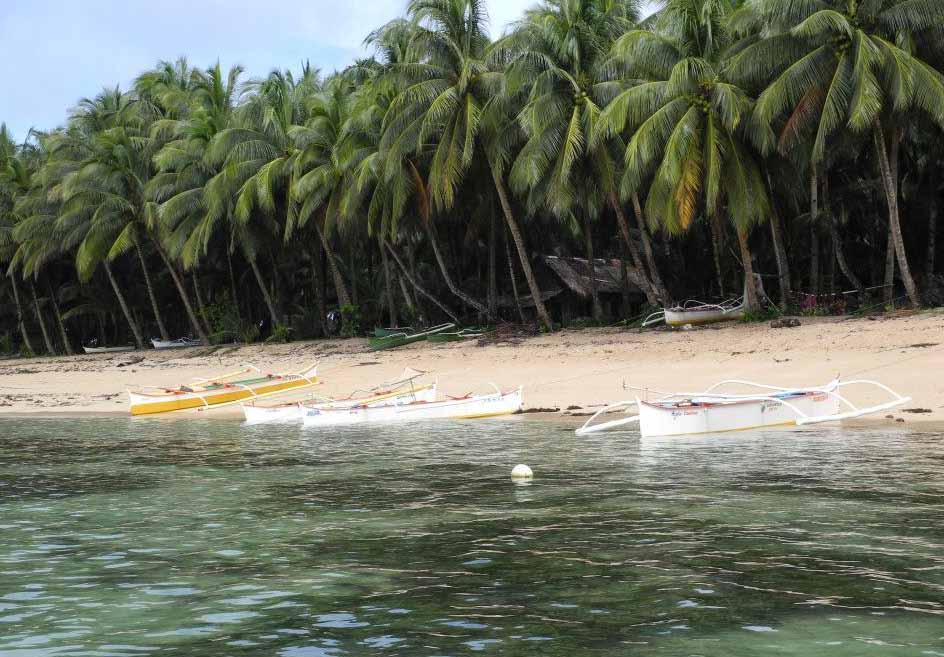
g lobal | Washington, DC e urope | Brussels | Madrid n orth a merica | Boston | Juneau | Kotzebue | Monterey | New York | Portland c entral a merica | Belize City s outh a merica | Santiago Give today at Oceana.org/give
1350 Connecticut Ave. NW, 5th Floor Washington, DC 20036 phone: +1.202.833.3900 toll-free: 1.877.7.OCEANA You can help Oceana fight to restore our oceans with your financial contribution. Call us today at 1.877.7.OCEANA, go to our website www.oceana.org/give and click on “give today” or use the envelope provided in this newsletter. You can also invest in the future of our oceans by remembering Oceana in your will. Please contact us to find out how. All contributions to Oceana are tax deductible.
is a 501(c)(3) organization as designated by the Internal revenue Service.
Protec ting the World’s Oc eans
Oceana
Oceana’s accomplishments wouldn’t be possible without the support of its members.
Ayoke Island, the Philippines. © Suzannah Evans






 Protecting the World’s Oc eans
Protecting the World’s Oc eans











































